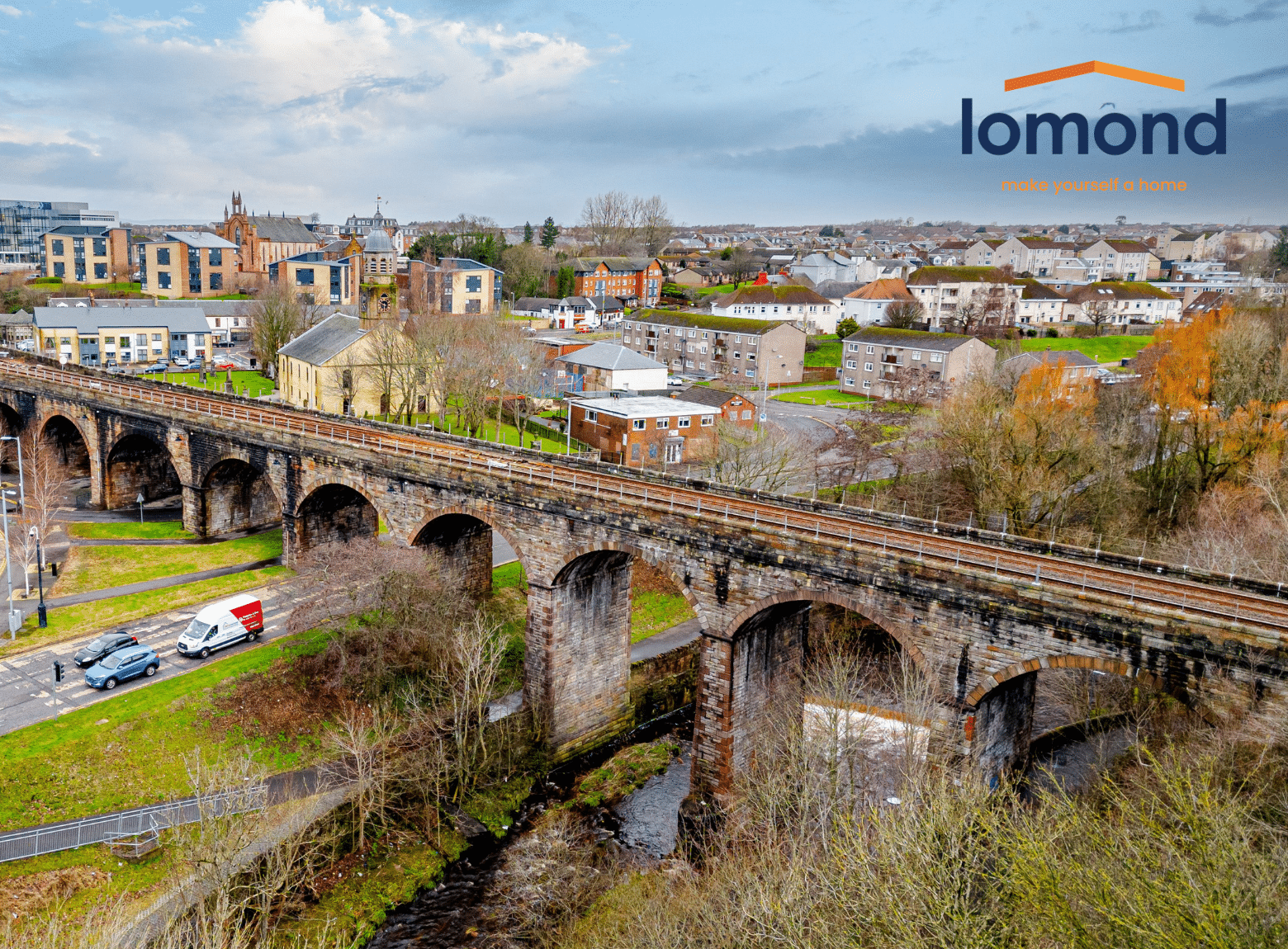Kilmarnock – A rich and vibrant past
Nestled in the heart of East Ayrshire, Scotland, the town of Kilmarnock boasts a rich history, a vibrant community, and a thriving property market. As leading estate agents in Kilmarnock it is essential for Lomond Property to understand the town’s evolution, and the development of its suburbs. Especially when it comes to effectively promoting property for sale in Kilmarnock for our clients. In this article, Lomond delve into the Kilmarnock’s history, its formation, the industries that shaped it, and the suburbs that have since emerged.

A Historical Perspective
Kilmarnock’s history dates back centuries, with roots in the medieval period. The town’s name is believed to have originated from the Gaelic “Cill Mhearnaig,” meaning “Church of St. Marnock,”. This is in reference to the town’s early religious significance. The town’s first recorded mention dates to 1591 when it was granted a royal charter.
Formation and Growth of Kilmarnock
Kilmarnock’s initial growth can be attributed to its favourable location along the River Irvine, which facilitated trade and commerce. By the 18th century, the town was experiencing significant expansion, thanks in part to the thriving industries that emerged during the Industrial Revolution.

The Kilmarnock Railway Viaduct: A Marvel of 19th-Century Engineering
One of the notable landmarks in the town of Kilmarnock is the Kilmarnock Railway Viaduct, which stands as a testament to the engineering prowess of the 19th century. This impressive structure played a significant role in connecting Kilmarnock with other parts of Scotland and further contributed to the town’s growth and prosperity.
Constructed in the mid-1800s as part of the Glasgow, Paisley, Kilmarnock, and Ayr Railway (GPK&AR) line. This railway was instrumental in improving transportation and trade links between Glasgow and the southwest of Scotland.
The viaduct itself is a marvel of Victorian engineering, with its distinctive red sandstone arches. It spans the Kilmarnock Water, a tributary of the River Irvine, and served as a vital transportation route for trains carrying goods and passengers.
The viaduct not only facilitated the movement of goods and people but also contributed to the development of Kilmarnock’s industries. The railway line allowed for the efficient transportation of coal, textiles, and other products, supporting the town’s economic expansion during the Industrial Revolution.
While the viaduct is no longer in use for its original railway purpose, it remains an iconic structure and a symbol of Kilmarnock’s historical significance. The viaduct has been preserved and is often visited by tourists and history enthusiasts, providing a glimpse into the town’s rich past.

The thriving Industries of Kilmarnock
- Textiles: Kilmarnock was known for its textile industry, with numerous cotton mills and weaving factories operating in the area during the 18th and 19th centuries. These industries provided employment opportunities and contributed to the town’s economic growth.
- Printing and Publishing: The town gained recognition for its printing and publishing industry, with renowned firms such as John Finlay & Co. publishing the iconic “Kilmarnock Edition” of Robert Burns’ poems in 1786.
- Engineering and Manufacturing: Kilmarnock was home to various engineering and manufacturing enterprises, including locomotive production and the famous Glenfield & Kennedy valve works.
- Football Heritage: Kilmarnock is also celebrated for its football heritage. The town is the birthplace of Kilmarnock Football Club, founded in 1869, and boasts a rich sporting tradition.

Kilmarnock’s Emerging Suburbs
As the population in Kilmarnock grew and industries thrived, the town’s suburbs began to take shape. Notable suburbs that have developed over the years include:
- Hurlford: Located to the east of Kilmarnock, Hurlford is a well-established suburb known for its residential neighbourhoods and proximity to local amenities.
- Stewarton: Situated to the north, Stewarton is another thriving suburb with a mix of residential and commercial areas, making it an attractive destination for property seekers.
- Crosshouse: To the southwest of Kilmarnock, Crosshouse offers a tranquil suburban setting while providing easy access to the town’s amenities.
The Present Kilmarnock Property Landscape
Today, Kilmarnock’s property market is vibrant and diverse, offering a range of properties, including houses, apartments, bungalows, new build flats and commercial spaces. Property for sale in Kilmarnock is in high demand, thanks to the town’s historical charm, modern amenities, and convenient location for commuters to Glasgow and other nearby towns such as Ayr and Irvine. Bungalows make up a significant proportion of the properties in the region meaning there are always an abundance of bungalows for sale in Kilmarnock.

Selling your Kilmarnock Home with Lomond Property
Kilmarnock’s rich history, diverse industries, and emerging suburbs make it an appealing destination for property seekers. As Kilmarnock estate agents, understanding the town’s past and present can help Lomond effectively sell your Kilmarnock property. Whether clients are looking for historical homes, modern apartments, or suburban tranquility, Kilmarnock offers a wide range of options. As experts in the region, Lomond are delighted to assist those looking to buy or sell property in Kilmarnock.

Having been born and raised in Kilmarnock, I’m proud of it’s rich heritage and proud to help new and old homeowners alike as they settle into life in our beautiful, historic town. If you’re looking to buy or sell property in Kilmarnock – please just contact me and the Lomond Property Kilmarnock Team on 01563593560
Craig Robertson | Director | Lomond Property, Kilmarnock

Check out Lomond Property Kilmarnock on Rightmove








